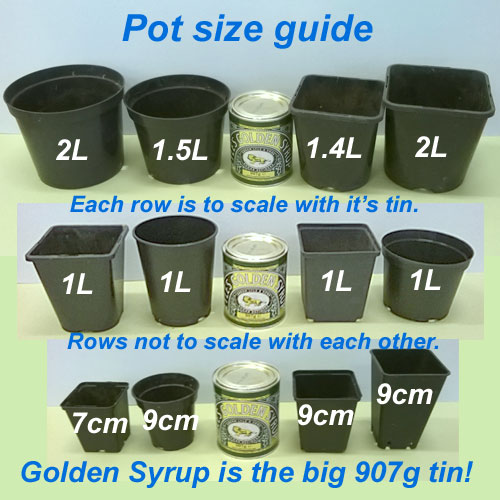| Understanding our Plant AttributesOn our website each individual plant page has a list of key features, or Attributes near the price and Add to Basket button. These are intended to give you a quick guide to the features and requirements of the plant to save you having to read through the descriptive text further down the page. The Attributes are also used to power the Filter and Advanced search functions of our plant catalogue. Most of the Attributes are self explanatory but we hope that the following will make it clear exactly what we mean by each one! Family Main Season Flower Colour Bear in mind that many plants have more than one colour in the flower, or indeed may change colour as the flower ages so this is a guide only. Leaf Colour Foliage Evergreen The plant keeps the majority of it's leaves for the majority of the year. Weather conditions and exposure can affect how well a plant retains it's leaves and all plants do change their leaves at some point so it is normal to get some leaf drop at some time. Semi-Evergreen These plants try to keep their leaves all year but often look rather sorry for themselves as they age. Typically this applies to plants overwinter and it is usual to tidy the tatty leaves up in early spring just before the new growth starts. Deciduous These plants will lose the majority of their leaves in autumn or early winter and have little or no sign of life overwinter. Dead leaves, flower stems and seedheads may be retained as interesting features overwinter but they are all bleached and often fall apart as winter progresses. Cut these plants back to ground level at the end of winter to allow new growth unrestricted space in the spring. Summer Dormant Many plants from a Mediterranean climate will adopt this method of growth to avoid the excessive heat and dryness in summer. The usual pattern with summer dormant plants is for the new growth to appear in late summer or autumn and to look good overwinter, flowers may be produced in autumn, winter or spring, and as summer arrives the growth dries off and the plant goes dormant again. These plants often have a bulb, tuber or rhizome that needs to be kept reasonably dry in the height of summer. Spring Ephemeral A less familiar term but one that is very useful once you understand it! These plants emerge in a rush in spring, often flowering before producing any leaves, and then die down again as summer arrives. Most Spring Ephemerals are self seeding annuals but there are many perennials too, and like the Summer Dormant plants they may have a bulb, tuber or rhizome. Wintergreen A halfway house between Summer Dormant and Spring Ephemeral, WIntergreen plants have their best foliage overwinter but may not necessarily go completely dormant during the summer. Not often used but it is a useful term for some plants like Arum and some Ferns that grow new leaves in late Summer or Autumn and keep them going as long as the conditions suit them. Position Soil Type If you just don't know what type of soil you have, take a handful of soil and squeeze it in your hand. As you open your hand again a sandy soil will usually crumble and fall apart on it's own, a good loam will hold together but break apart if you prod it, and a clay soil will have made a solid, hard lump that resists your attempts to break it up. Height Peat Free? Hardiness Guide Please be aware that the hardiness of a plant is influenced by many factors, including but not limted to; soil, site/aspect, drainage, wind, whether in a container or planted, how long established, snow cover (or lack of!) etc. Pot Size Sometimes we make a mistake or run out of a particular size so we may send an alternative size. If we send you an alternative that is smaller than listed we refund you the difference, if it is bigger than listed you generally get a bargain! Please see our Terms and Conditions for our exact policy on this.
|

